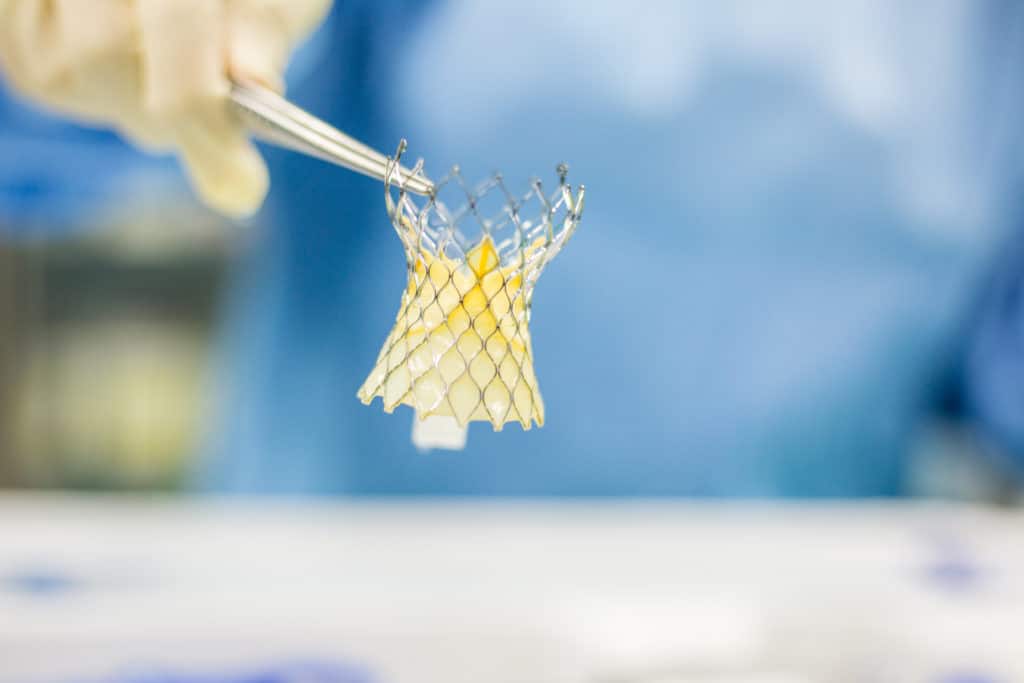TAVI
With the ageing of the general population in Western society we are seeing an ever increasing number of older patients, typically in their 70s, 80s or older, with wear and tear of the main heart valve, the aortic valve. This frequently manifests as a progressive narrowing of the valve which, if left untreated, would ultimately cause symptoms and a fatal outcome.
Surgery to replace the aortic valve has been the gold standard treatment for decades. However many elderly patients are frail and have other medical conditions, which made them high risk for conventional surgery. This spurred the development of a less invasive procedure called TAVI (transcatheter aortic valve implantation), or TAVR (transcatheter aortic valve replacement), first performed in man in 2002. Early trials showed that this was a highly successful treatment, such that uptake has been rapid and it is now used for a wider group of patients, and not just those at high risk.
Although minimally invasive, the procedure remains highly complex and involves a multidisciplinary “TAVI team”, which includes cardiologists, cardiothoracic surgeons, imaging specialists and an anaesthetist.
There are a number of ways the valve can be inserted, usually from the artery in the groin (the transfemoral approach), although occasionally other approaches are required. The procedure used to be performed under general anaesthesia but these days it is usually undertaken using local anaesthesia and sedation, which is safer for the patient.
The replacement valve (pictured to the right is a CoreValve, manufactured by Medtronic) is positioned through a catheter across the patient’s own narrowed valve using echo and X-ray guidance; when the precise position has been located the valve is deployed, squashing the patient’s narrowed valve out of the way, to be replaced by the artificial heart valve. Although this may sound like a simple procedure, especially since it is less invasive than conventional surgery and avoids large scars down the chest, it is not; it carries important procedural risks and complications, not that dissimilar from surgery.
All patients treated with the TAVI procedure are followed up in a UK database to help refine the indications and contraindications for such a procedure.

Related links:
Symptoms - Breathlessness and Fluid
Retention
Breathlessness, or dyspnoea, is a common symptom of several medical disorders. Read more
Tests - Echocardiography
Echocardiography is the study of the heart using ultrasound. Similar to a scan of a baby undertaken during pregnancy, an ultrasound probe applied to the chest wall can be used to study the heart. Read more
Conditions - Valve Disease
The four chambers of the heart are separated by one-way valves to ensure efficient forward flow of blood from chamber to chamber and into the main blood vessels, the aorta and pulmonary artery. Read more
Treatments - Valve Repair/Replacement
Heart valve surgery has a history dating back more than 60 years and during this time surgical techniques and types of artificial heart valve (known as valve prostheses) have been refined such that with appropriate patient selection, excellent long term outcomes can be reliably achieved. Read more
Treatments - MitraClip
The mitral valve is a highly complex structure, comprising two leaflets, which acts like a one-way valve between two chambers, the left atrium and left ventricle. Read more